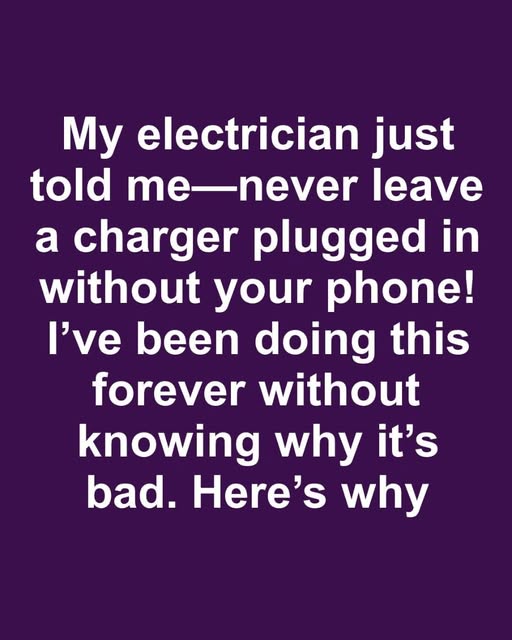In today’s fast-paced world, it’s not uncommon for people to leave their phone chargers plugged into the wall even when they’re not charging their devices. This habit, often born out of convenience, is something many of us do without a second thought. However, recent advice from electricians suggests that this seemingly harmless practice could have hidden risks. In this article, we’ll explore why leaving chargers plugged in without a phone attached might not be the best idea.
Understanding the Basics: How Chargers Work
To understand why leaving a charger plugged in can be problematic, it’s important to know how chargers work. A charger converts the AC electricity from your wall outlet into DC electricity, which is suitable for charging your device’s battery. When a phone or other device is connected, the charger draws power from the outlet to charge the battery. However, even when no device is connected, the charger can still draw a small amount of power, known as ‘vampire energy’ or ‘standby power’.
Advertisement
The Risks of Leaving Chargers Plugged In Without a Device
Leaving a charger plugged in without a device can pose several risks. These include potential fire hazards, unnecessary energy consumption, and increased wear and tear on the charger itself. While the risks may seem minimal, they can accumulate over time, leading to significant consequences.
Fire Hazards: Why Unattended Chargers Can Be Dangerous
One of the primary concerns with leaving chargers plugged in is the risk of fire. Chargers can overheat if they are left plugged in for extended periods, especially if they are of poor quality or damaged. Overheating can lead to electrical fires, which can be devastating. It’s crucial to ensure that chargers are unplugged when not in use to minimize this risk.
Energy Waste: The Environmental Impact of Idle Chargers
Idle chargers contribute to energy waste, as they continue to draw power even when not actively charging a device. This wasted energy, though small for a single charger, adds up when considering the millions of chargers left plugged in worldwide. This unnecessary energy consumption contributes to higher electricity bills and increased carbon emissions, impacting the environment.
Wear and Tear: How Constant Plugging Affects Chargers
Constantly leaving chargers plugged in can lead to wear and tear on both the charger and the outlet. Over time, this can reduce the lifespan of the charger, leading to more frequent replacements. Additionally, the outlet itself can become worn, potentially leading to loose connections and increased fire risk.
Financial Implications: The Cost of Leaving Chargers Plugged In
While the cost of leaving a single charger plugged in might seem negligible, it can add up over time. The continuous draw of power, though small, can increase your electricity bill. Moreover, the need to replace chargers more frequently due to wear and tear can also add to your expenses.
Expert Opinions: Insights from Electricians and Safety Experts
Electricians and safety experts often advise against leaving chargers plugged in when not in use. They highlight the potential fire hazards, energy waste, and wear and tear as key reasons to unplug chargers. Experts recommend using chargers that meet safety standards and ensuring they are unplugged when not actively charging a device.
Practical Tips: How to Safely Manage Your Chargers
To safely manage your chargers, consider unplugging them when not in use. Use power strips with switches to easily disconnect multiple devices at once. Invest in high-quality chargers that meet safety standards, and regularly inspect them for signs of damage. These simple steps can help reduce risks and save energy.






